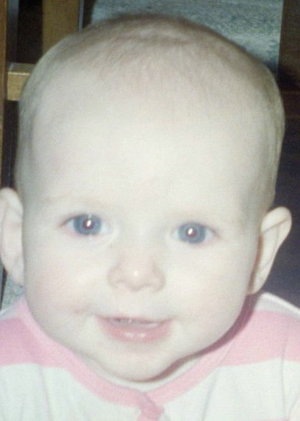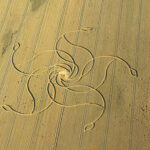Parents have the vision of a perfect, beautiful newborn as it graces the world. Many are quite surprised to see instead a wrinkly, splotchy little creature with a newborn head shaped not unlike many of those odd movie screen aliens. Why does the baby’s head look so weird? What happened? Nature happened and there is generally nothing to worry about.
Baby’s are born with soft spots, or fontanels, that allow for some shifting of the cranial bones as the baby moves through the birth canal. Babies born vaginally are often born with a cone-shaped head, having been molded into shape during the time spent in the birth canal. Generally, the shape of the newborn’s head gradually becomes more rounded and “normal” during the first several days after birth. If your baby’s head looks less than rounded and normal, you may be wondering if you have cause for concern. What exactly is a “normal” head shape for a baby and when should you worry?
What is Normal?
Each baby is different and will develop at his or her own rate. Your physician will examine your baby’s head many times during the first few months of life both at the hospital before release and during well child visits. The physician will measure the child’s head circumference and will examine the soft spots for abnormalities and consider any flat spots that are a result of molding and positioning. Attempting to judge your child’s development from the development of other children can become quite stressful. Your physician is your best resource in determining what is “normal” for your child.
It’s Been Weeks. Why does My Baby’s Head Still Look Weird?
The baby’s head not only becomes shaped, or mishapen, in the womb and during birth, but is also shaped after birth as well. Because the baby’s head remains flexible for weeks after birth, the baby’s head shape is not yet fully developed. Babies may develop flattened spots on the head (Plagiocephaly), a long and narrow head (Spaphocephaly) or a widened head (Brachycephaly). These shapes can continue to change in the first few weeks or months of life at home.
The various infant head shapes can all be caused by multiple factors. In some situations, head shape abnormalities can be caused by congenital defects in which the fontanels close early or were not properly formed. These closures lead to bulges and shifting within the skull as the child’s brain attempts to adjust to the defect.
Those same abnormal shapes can also be caused by simple positioning. If your baby tends to turn the head to a certain direction or lay consistently flat, the shape of the head may be only molding to positioning as it did in earlier development.
There are also certain medical conditions that lead to changes in skull structure, fluid retention and cranial development.
What Should I Do If I’m Concerned about My Baby’s Head Size or Shape?
First of all, remain current on well baby checkups. If you are concerned between checkups, call your physician and discuss the issue. Only your physician is able to evaluate your baby’s development and examine him or her to determine if there is cause for concern. You physician will examine those soft spots well and often. He or she will also be evaluating a number of other milestones that asses your baby’s brain development.
How Can we “Fix” the Shape of our Baby’s Head?
Many babies are able to correct their head’s appearance all on their own, or with a little help from the parents. As they become more mobile, they are less likely to spend significant time in one position-decreasing pressure on favored spots of the head, allowing the head mold to a more “rounded” form.
Your physician may advise you to be conscious about your baby’s head positioning-and turn his or her head to other positions more frequently. You may be asked to hold the baby upright more often or increase “tummy time”.
If your child suffers from a congenital disorder, correction may require surgery or additional medical intervention. Some more severe positional molding defects that were not the result of medical defect may also need a specially designed helmet or headgear to help re-mold your baby’s skull.
Parents worry. Never be shy to discuss your concerns with your pediatrician. They have likely heard it before-and it is certainly better to always be upfront and vocal than risk missing something of concern. Your baby’s head will most likely turn into the vision of beauty you imagined-it just may take a little more work and waiting than anticipated.
Sources:
http://www.mayoclinic.com




